The materials commonly used in sheet metal processing are cold-rolled sheet (SPCC), hot-rolled sheet (SHCC), galvanized sheet (SECC, SGCC), copper (CU) brass, red copper, beryllium copper, aluminum plate, aluminum profile, stainless steel (mirror surface, brushed surface, matte surface), according to the function of the product, the material used is different, generally need to consider application and cost of the product.There are many sheet metal materials suitable for stamping, Sheet metal materials widely used in electronic and electrical industries include the following:
1.Cold-rolled steel sheet/SPCC -The steel ingot is continuously rolled into steel coil or sheet with required thickness by cold rolling mill. These coils and sheets are SPCC. There is no protection on the surface of SPCC, which is easy to be oxidized when exposed to the air. Especially in humid environment, the oxidation speed is accelerated and dark red rust appears. The surface shall be painted, electroplated or otherwise protected during use. Cold-formed steel (CFS) is the common term for steel products shaped by cold-working processes carried out near room temperature, such as rolling, pressing, stamping, bending, etc. Stock bars and sheets of cold-rolled steel (CRS) are commonly used in all areas of manufacturing. The terms are opposed to hot-formed steel and hot-rolled steel.
2.Steel plate Galvanized/SECC -The substrate of SECC is a general cold-rolled steel coil, which becomes an electro galvanized product after degreasing, pickling, electroplating and various post-treatment processes in the continuous electro galvanized production line. SECC not only has the mechanical properties and similar processability of general cold-rolled steel sheets, but also has superior corrosion resistance and decorative appearance. It has great competitiveness and substitutability in the market of electronic products, household appliances and furniture. For example, SECC is widely used in computer chassis.
3.Hot-dip Galvanized steel /SGCC -SGCC is a material grade and designation defined in JIS G 3302 standard. JIS G 3302 is a Japanese material standard for hot dip galvanized steels. The commercial quality hot dip galvanized steel is a type of steel that can be made after galvanizing a coil of SPCC cold rolled material.Hot dip galvanized steel coil refers to the semi-finished products after hot-rolled pickling or cold rolling, which are cleaned and annealed, immersed in the zinc melting tank with a temperature of about 460 ° C, and then coated with zinc layer, and then quenched, tempered, leveled and chemically treated. SGCC material is harder than SECC material. It has poor ductility, thick zinc layer and poor weldability.
4.Stainless steel 301 / SUS301 -The content of Cr (chromium) is lower than SUS304 and the corrosion resistance is poor, but it can obtain good tensile force and hardness after cold processing, and has good elasticity.
It is mostly used for shrapnel spring and anti EMI.
5.Stainless steel 304 /SUS304 -This is one of the most widely used stainless steels. Because it contains Ni (nickel), it is richer in corrosion resistance and heat resistance than Cr (chromium) steel. It has very good mechanical properties, no heat treatment hardening phenomenon and no elasticity.
Sheet metal processing commonly used materials and performance introduction
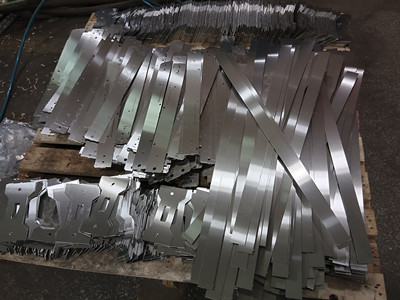
Product Name: Stainless Steel Plate
Code name: SUS, STAINLESS STEEL
2, generally do not do surface treatment. For baking paint, special surface treatment is required.
Product Name: Cold Rolling Steel
Code: SPCC, CRS (SPCD: cold plate for drawing, SPCE cold plate for deep drawing.) Hardness: HRB 1/2H=74~89 1/4H=65~80 1/8H=50~71 H=89 or more Tensile strength: above 28kgf/mm.Material thickness: 0.25~3.2mm. 3.2mm or more material customizedMaterial width: width 5' (1524mm), generally 4' or 1219mm or 1250mm, can be cut to any size less than 1524mm as required.Material length: can be cut to any size as required. Generally 8' or 2438mm or 2500mm. Material Properties:1.Iron gray luster, the surface is easy to be scratched and rusted, and attention must be paid to protection and quick sequence during processing. 2. It is suitable for electroplating (colorful zinc plating, white zinc plating, nickel plating, tin plating...), baking paint, powder spraying... and other workpieces. Specific gravity: 7.85.Weight calculation: length (m) × width (m) × thickness (mm) × specific gravity = kilograms (kg) such as:The weight of SPCC2.0×1220×2440 is: 2.0×1.22×2.44×7.85=46.74kg Another example: SPCC1.0×1000×2000 weight is: 1×1×2×7.85=15.7kgNote:1.The general tolerance of material thickness is +0, -0.08, that is, the actual measurement of plate thickness 2.0mm may only be 1.92mm. 2. Use a micrometer to measure the thickness of the material, not a cursor caliper.
3.In order to prevent the plate from rusting, lightly apply anti-rust oil on the surface of the workpiece after processing, or cover the workpiece with oil cloth.
Product Name: Aluminum
Code: AL, A1100P, A5052H32P, AL6061T6
Common models: A1100P-O (O stands for soft material, no hardness), A1050P, A5052H32P, AL6061T6, AL6063T5
Tensile strength: A5052H32P=25kgf/mm2 or more, A1100P, A1200P=7 kgf/mm2 or more, AL6061T6=27kgf/mm2 or more
Material thickness: 0.3~20mm. Materials above 10.0mm are more difficult to buy.
Material Properties:
Product Name:Copper Plate Copper
Material Properties:
3.1 Introduction of Common Plates
3.1.1 Cold-rolled ordinary thin steel plate is the abbreviation of ordinary carbon structural steel cold-rolled plate, referred to as: cold plate, which is made of ordinary carbon structural steel hot-rolled steel plate through further cold rolling into a steel plate with a thickness of less than 4mm. Rolling at room temperature does not produce oxide scale. Therefore, it has good surface quality and high dimensional accuracy. Coupled with annealing treatment, its mechanical properties and process properties are good. It is a commonly used metal material for sheet metal processing.Commonly used grades:national standard GB (Q195, Q215, Q235, Q275) Japanese standard JIS (SPCC, SPCD, SPCE) click here to email us for more information.
3.1.2 Continuous electro-galvanized sheet, commonly known as electrolytic plate, refers to the fact that under the action of an electric field on the electro-galvanizing line, zinc is deposited from the deep water of zinc salt onto the surface of the prepared cold plate, and the surface of the steel plate will A layer of galvanized layer is produced, so that the steel plate has good corrosion resistance. Brand: National Standard GB (DX1, DX2, DX3, DX4) Japanese Standard JIS (SECC, SECD, SECE)
3.1.3 Continuous hot-dip galvanized thin steel sheet, generally referred to as galvanized sheet or white iron sheet, the steel sheet has a beautiful surface, a block or leaf-shaped plated crystal pattern, and the coating is firm and has excellent atmospheric corrosion resistance. It has good welding performance and cold forming performance. Compared with the surface of electro-galvanized sheet, its coating is thicker. It is mainly used for sheet metal parts that require strong corrosion resistance.
3.1.4 Stainless steel plate is a kind of steel that is resistant to weak corrosive media, such as air, steam and water and chemically corrosive media such as acid, alkali and salt, also known as stainless acid-resistant steel. In practical applications, the
Product Name:Hot-dip Galvanized Steel Code:SPGC Hardness:HRB 1/2H=74~89 1/4H=65~80 1/8H=50~71 H=89 or more.
Tensile strength: above 40~55kgf/mm2.
Material thickness: 0.4~3.2mm. Materials above 3.2mm are difficult to buy, and are generally replaced by electroplating white zinc.
Material width: width 5' (1524mm), generally 4', that is 1219mm or 1250mm, can be cut to any size less than 1524mm as required.
Weight calculation: length (m) × width (m) × thickness (mm) × specific gravity = kilograms (kg) such as:
The weight of SPGC2.0×1220×2440 is: 2.0×1.22×2.44×8.25=49.1kg Another example: SPGC1.0×1000×2000 weight is: 1×1×2×8.25=16.5kg
Product name:Hot Rolling Steel
Code name: SPHC, HRS
Hardness: HRB 1/2H=74~89 1/4H=65~80 1/8H=50~71 H=89 or more
Material Properties:
steel that is resistant to weak corrosive media is often called stainless steel, and the steel that is resistant to chemical media corrosion is called acid-resistant steel.
3.1.5 Aluminum plate, aluminum is a silver-white light metal with good thermal conductivity, electrical conductivity and ductility.
Pure aluminum has very low strength and cannot be used as a structural material. Aluminum alloy plates are generally used in sheet metal processing. According to the content of alloy elements, aluminum plates can be divided into 8 series, namely 1000 series, 2000 series ~ 8000 series, commonly used There are 2000 series, 3000 series and 5000 series. 2000 series is a kind of copper-aluminum alloy, which is characterized by high hardness, also known as hard aluminum; it can be used as various medium-strength parts and components, 3000 series is a kind of manganese-aluminum alloy with good rust resistance, so it is also called hard aluminum. Rust-proof aluminum; 5000 series is a magnesium-aluminum alloy with low density, high tensile strength and high elongation. The weight of aluminum-magnesium alloy is lower than other series under the same area.
3.1.6 Red copper plate, red copper is a common name for pure copper. It is purple in appearance and has excellent electrical conductivity, thermal conductivity, ductility and corrosion resistance, but it is expensive. For parts that need to carry large currents, the strength of red copper is low, and generally cannot be used as structural parts. Grade: T1, T2, T3
3.1.7 Brass plate. Brass is a copper-zinc alloy with high strength and excellent cold and hot workability, but it is prone to corrosion and cracking. It is relatively cheap and widely used.Common grades: H59, H62, H70
Stainless steel is usually divided into:
1.Ferritic stainless steel. Contains 12% to 30% chromium. Its corrosion resistance, toughness and weldability increase with the increase of chromium content, and its resistance to chloride stress corrosion is better than other types of stainless steel.
2.Austenitic stainless steel. It contains more than 18% chromium, and also contains about 8% nickel and a small amount of molybdenum, titanium,
Common models: SUS304 (18-8 stainless steel, non-magnetic) SUS301 (spring stainless steel, slightly magnetic) SUS430 (magnetic, easy to rust) Tensile strength: more than 53kgf/mm2.
Material thickness: 0.1~10.0mm. Materials above 10.0mm are more difficult to buy.
Material width: width 5' (1524mm), generally 4', that is 1219mm or 1250mm, can be cut to any size less than 1524mm as required.
Material length: can be cut to any size as required. Generally 8', which is 2438mm or 2500mm. Material Properties:1.Metallic white luster, the surface is not easy to rust, and can be divided according to the surface state:matte surface, bright surface, mirror surface, brushed surface, etc. To protect the surface, a PVC protective film is often attached.
3. It is not suitable for electroplating, but electrolysis can be used.
4. It is suitable for refrigeration, air conditioning, home appliances, and decorative structural parts. Specific gravity: 7.95 Weight calculation: length (m) × width (m) × thickness (mm) × specific gravity = kilograms (kg) such as SUS304 2.0×1220×2440 weight is: 2.0×1.22×2.44×7.95=44.65kg Another example: SUS430 1.0×1000×2000 weight is: 1×1×2×7.95=15.9kg Note: 1. General tolerance of material thickness+ 0, -0.08, that is, the actual measurement of the plate thickness of 2.0mm may only be 1.92mm. 2. Use a micrometer to measure the thickness of the material, not a cursor caliper.
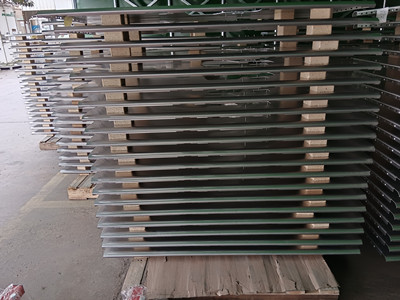
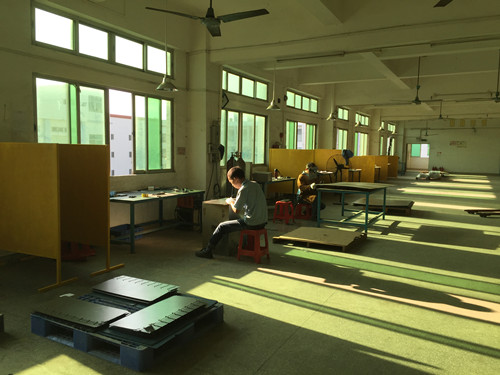
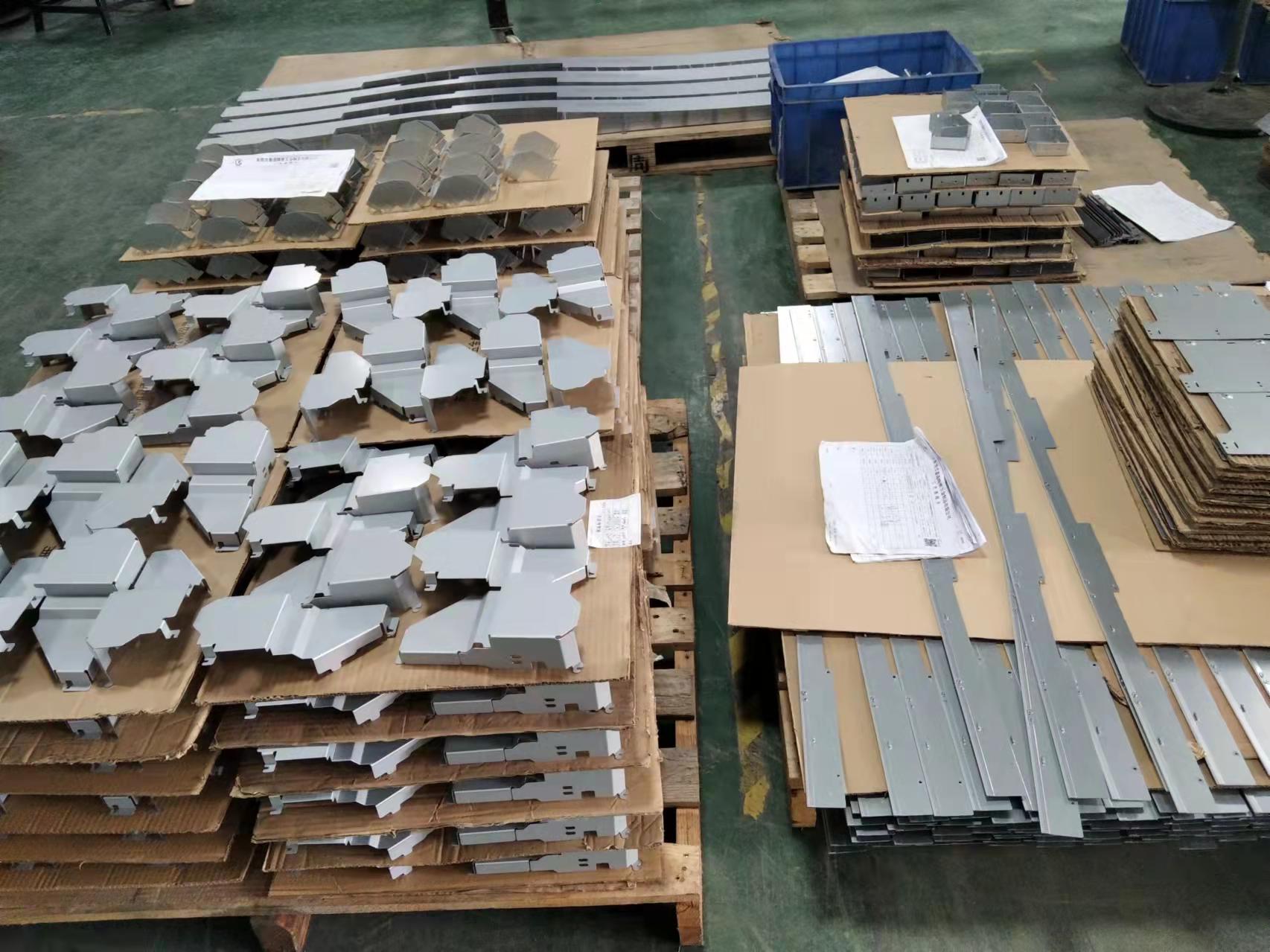
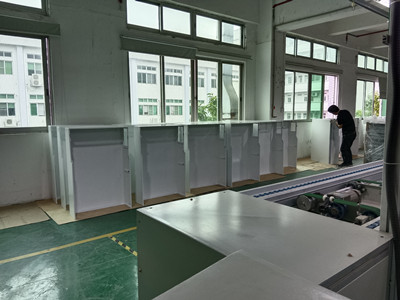
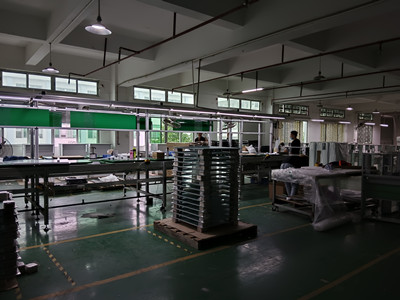
Material width: width 5' (1524mm), generally 4', that is 1219mm or 1250mm, can be cut to any size less than 1524mm as required.
Material length: can be cut to any size as required. Generally 8', that is 2438mm or 2500mm
1. Metallic white luster, the surface is easy to be oxidized and corroded, so the surface is often pasted with PVC protective film. 2. Surface treatment: sandblasting, wire drawing, or polishing first, then anodizing (non-conductive, can be dyed in various colors); chromate oxidation (also known as conductive oxidation, with primary color and golden yellow). Specific gravity: 2.75
Weight calculation: length (m) × width (m) × thickness (mm) × specific gravity = kilograms (kg) such as:
The weight of AL 2.0×1220×2440 is: 2.0×1.22×2.44×2.75=16.37kg Another example: AL 1.0×1000×2000 weight is: 1×1×2×2.75=5.5kg.
Note:
1. The general tolerance of material thickness is +0, -0.08, that is, the actual measurement of plate thickness 2.0mm may only be 1.92mm. 2. Use a micrometer to measure the thickness of the material, not a cursor caliper.
3. Pay attention to the protection of aluminum plate processing, do not scratch the surface, and prevent cracks and folding knife marks when bending. (If the material is too hard, it can be annealed first or the lower die groove can be enlarged)
Code: C1020, C1100, C2100, 2200, 2300, 2400 (below copper) C2600 and above are brass.
Common models: C1020P-O (O stands for soft material, no hardness), C1020P-1/2H (Vickers hardness HV75~120) 1/4H HV=60~100 H HV=80 or more
Tensile strength: O material=20kgf/mm2 or more, 1/4H material=22~28 kgf/mm2 1/2H material=25~32kgf/mm2, H material=28 kgf/mm2 or more Material thickness: 0.3mm or more
Material width: generally 2', that is, 610mm, if it exceeds, it must be customized. Material length: generally 5', ie 1524mm
1.#1xxx has a copper content of 99.9%, (also known as electrolytic copper or confluence copper) with excellent electrical and thermal conductivity, good drawing processability, good weldability, corrosion resistance, weather resistance, and metallic red luster. Suitable for electrical and chemical industries.
#2xxx Copper content Copper content is 60-96%, (also known as brass or confluence copper) ductility, processability, electroplating properties are commonly used in wiring equipment, instrument panels, bullet casings, etc.
2.Surface treatment: it can be drawn first, or polished and then pickled, copper-plated, tin-plated, and nickel-plated. Specific gravity: 8.9 Weight calculation: length (m) × width (m) × thickness (mm) × specific gravity = kilograms (kg) such as:
C1020P1/4H 2.0×600×1500 Weight: 2.0×0.6×1.5×8.9=16kg Another example: C1020P1/2H 1.0×1000×1000 Weight: 1×1××8.9=8.9kg
Note: 1. The general tolerance of material thickness is +0, -0.08, that is, the actual measurement of the plate thickness of 2.0mm may only be 1.92mm. 2. Use a micrometer to measure the thickness of the material, not a cursor caliper.
Brand: National Standard GB (Zn100-PT, Zn200-SC, Zn275-JY) Japanese Standard JIS (SGCC, SGCD1, SGCD2, SGCD3)
Material length: can be cut to any size as required. Generally 8', which is 2438mm or 2500mm
Material Properties:
1. The metal has a white luster with patterns on it, and the surface is not easy to rust, but white rust spots will occur due to corrosion. 2, generally do not do surface treatment.
3. No electroplating (colorful zinc plating, white zinc plating, nickel plating, tin plating.)
4. It is suitable for refrigeration, air conditioners, heavy motors, and roof structural parts. Specific gravity:8.25
Note:
1. The general tolerance of material thickness is +0, -0.08, that is, the actual measurement of plate thickness 2.0mm may only be 1.92mm. 2. Use a micrometer to measure the thickness of the material, not a cursor caliper.
3. If you want to bend, you must pay attention to whether the surface zinc layer falls off, and remove the zinc powder of the lower mold in time.
Tensile strength: above 41~52kgf/mm.
Material thickness: 1.4~6.0mm. Material code above 6mm is SS41
Material width: width 5' (1524mm), generally 4' or 1219mm or 1250mm, can be cut to any size less than 1524mm as required.
Material length: can be cut to any size as required. Generally 8' or 2438mm or 2500mm.
1. Black-gray luster, the surface is not easy to be scratched, but easy to rust, which must be removed during processing.
2. Not suitable for electroplating (colorful zinc plating, white zinc plating, nickel plating, tin plating...).
3. It is suitable for structural parts such as baking paint and powder spraying. Specific gravity: 7.85.
Weight calculation: length (m) × width (m) × thickness (mm) × specific gravity = kilograms (kg) such as:
The weight of SPHC2.0×1220×2440 is: 2.0×1.22×2.44×7.85=46.74kg Another example: SPHC1.0×1000×2000 weight is: 1×1×2×7.85=15.7kg.
Note:
1. The general tolerance of material thickness is +0, -0.08, that is, the actual measurement of plate thickness 2.0mm may only be 1.92mm. 2. Use a micrometer to measure the thickness of the material, not a cursor caliper.
3. In order to prevent the plate from rusting, lightly apply anti-rust oil on the surface of the workpiece after processing, or cover the workpiece with oil cloth. 4. If electroplating is to be done, sandblasting or wire drawing must first remove the surface carbonized layer.
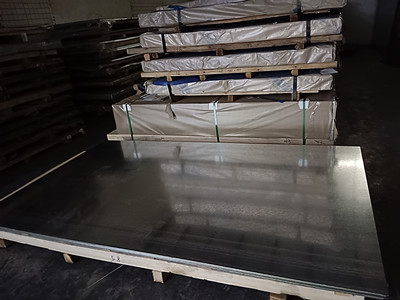
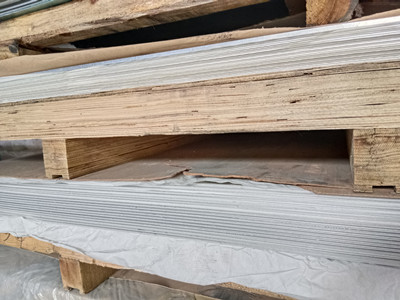
Commonly used grades are: 3A21 (old grade LF21), 5A02 (old grade LF2), 2A06 (old grade LY6)
elements such as nitrogen. It has good comprehensive performance and is resistant to corrosion by various media.
3.Austenitic-ferritic duplex stainless steel. It has the advantages of both austenitic and ferritic stainless steels, and has superplasticity.
4.Martensitic stainless steel High strength, but poor plasticity and weldability.
It should be noted that the strength of the stainless steel plate is high, and the knife wear of the CNC punching machine is relatively large, so it is generally not suitable for punching.
Brand: There are many types of stainless steel, and austenitic stainless steel is commonly used in sheet metal processing.
(1Cr18Ni9Ti) Japanese standard JIS (SUS)
